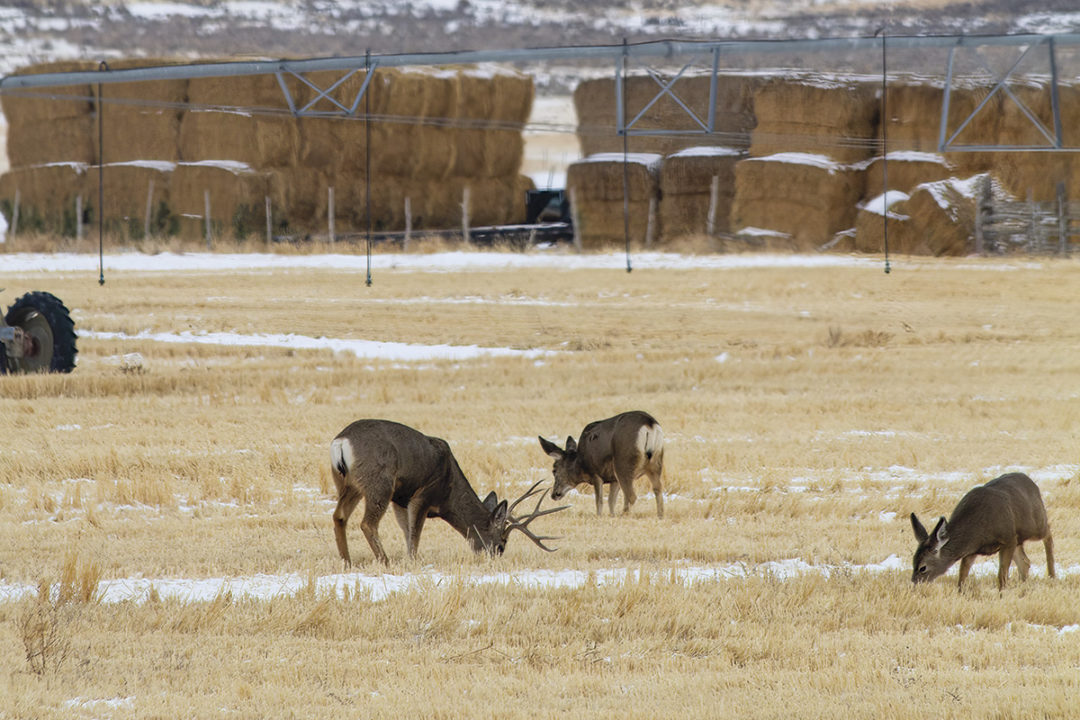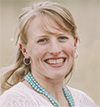Cohen Croney of Bancroft values wild things and wild places. That’s why, in 2017, he and his sister worked with the Sagebrush Steppe Land Trust to put their 560-acre ranch under conservation easements to protect it from development in perpetuity.
“I’d been looking to do that for quite a while because I want my farmland to stay open and not suffer the horrors of development,” he says. “It wasn’t so much the money involved as much as the protection from development … I’m highly allergic to that kind of thing.”
The American Farmland Trust (AFT) reports that between 2001 and 2016, nearly 69,000 acres of Idaho agricultural land and rangeland were developed and/or subdivided. If development continues at the same rate, the group estimates another 113,000 acres will be compromised or taken out of production by 2040. Idaho’s most productive working lands make up the bulk of that figure.
Croney is not alone in wanting to know that his land will not be a development statistic. “Almost daily, we get calls from landowners asking, ‘Can you put me on a list?’” says Matt Lucia, executive director of Sagebrush Steppe Land Trust.
Neither AFT nor David Anderson (its Idaho program manager) is anti-development. “People need healthy food to eat as well as safe shelter,” he says. “Let’s get smart about it.” AFT’s aim is to protect the agricultural economy, often through easements and long-term community planning to build better cities that limit the sprawl of low-density development.
Conservation easements: One potential solution
A land trust is a not-for-profit organization that holds conservation easements at the request of the landowner. A conservation easement is “a tool the landowner uses to be fairly compensated for selling their development rights,” Anderson says. The value of the easement is calculated by assessing the value of a working farm or ranch with and without the rights in question.
Coming up with the cash for the transaction – plus the amount needed to oversee the easement in perpetuity – can be a challenge. The NRCS is often a large contributor but typically only matches funds. Many land trusts ask the owner to donate a portion of the value. They depend on fundraisers for the rest.
While land trusts in the U.S. may share broad goals, each has its own local flavor. The Sagebrush Steppe Land Trust, for example, covers seven southeast Idaho counties that include a lot of rangeland. They prioritize working lands, wildlife habitat and open space. These priorities made the Croney place, along the Portneuf River and into the foothills, a good candidate for an easement.
The ranch was homesteaded in the early 1910s by Croney’s paternal grandparents and farmed by Croneys, including Cohen himself, until he planted it to grass in the 1970s. He has leased it to a neighbor since he sold his own cows a decade ago, and it will continue to be grazed long after he’s gone.
Like all easements, the one on the Croney place is attached to the land deed. Unique are the specific terms. “It won’t be farmed again or developed,” he says. It will be grazed, with mechanical manipulation permitted if necessary. The agreement excludes about 2 acres around the farmstead site.
Because some of the funding came from Department of Fish and Game, the easement mandates the owner allow public fishing in the river. “That was the only stipulation,” Croney says. “Otherwise, we were pretty much able to dictate our own terms.”
Conservation as a legacy
“At some point in a working landowner’s lifetime, they get to a point where they ask themselves, ‘Do I want to leave a legacy for future generations to continue to grow food on this land?’” Anderson says. “And when they get to that point, I want them to know they do have options.”
Ensuring that the land is kept working after death is a primary reason a landowner might seek an easement. Other benefits may be its use as a succession planning tool or the financial incentive. The latter may be needed for retirement or to invest into the operation. Lucia knows one family that is slowly piecing their great-grandfather’s ranch back together by using money from one easement to purchase the next property.
Whatever the motivation, both Anderson and Lucia emphasize the relationship is a partnership. “We’re legally committing to ensuring that the terms of the contract are upheld forever,” Lucia says. This includes both monitoring and helping the landowner make adjustments as necessary.
"If you’re a good steward, we won’t ask you to change anything,” he says. “If it falls under the baseline conditions, we’ll work with you to make improvements.” And at least with Sagebrush Steppe Land Trust, continued farming and ranching is included in every easement.
But there’s no going back. “Include all of your kids in this conversation and decision,” Lucia says. “You really need to think through the long term.” If something happens to the land trust, the easement will be transferred to another like-minded nonprofit organization. After all, permanence is precisely the point.
What about the next generation?
“People think you’re closing a bunch of doors,” says Amy Tonsmeire of Salmon, “but really, it just makes you be more creative.”
Like the Croneys, Tonsmeire and her brother co-own Hayden Creek Ranch, which is located along key salmon-spawning habitat. Unlike Cohen, neither was interested in ranching full time after their parents passed away. But they did love the ranch and wanted to keep it together – and, thanks to easements and a BLM permit, selling the cows or a small portion of the ranch was off the table anyway.
Tonsmeire’s parents were founding members of the Lemhi Regional Land Trust. “When the land trust started up, Salmon was so insulated from development and high property values,” she says. “It was hard to see the need. Now we’re seeing big ranches being split … We’re starting to see the benefits where there are big drainages where we’ve preserved land.”
The siblings have tried different things over the years but now lease the land and equipment while maintaining a share in the cattle. Both have their own off-ranch careers but live on the place part time and share in decision-making.
“[The easements] made that part of the estate easier,” Tonsmeire says. “The ground rules were already there, we just had to work within them.”
'Not just wild critters'
In retrospect, the siblings might have done some things differently, such as selecting different building sites or excluding some land around their homes from the easement. However, Tonsmeire is positive about the decision. “As an adult, I realize how truly unique and sacred this tract of open land is. Just trusting people, even family, to see the importance to future generations is not enough. It gives me peace knowing no matter the future challenges, this land will retain its crucial qualities for agriculture, salmon and wildlife populations long after I'm gone.”
Cohen adds a further endorsement of his partners at Sagebrush Steppe Land Trust. “They’re trying to protect what they can of not just wildlife habitat, but family farms and ranches,” he says. “They’re dealing with families, not just wild critters.”



.jpg?height=auto&t=1713304395&width=285)


